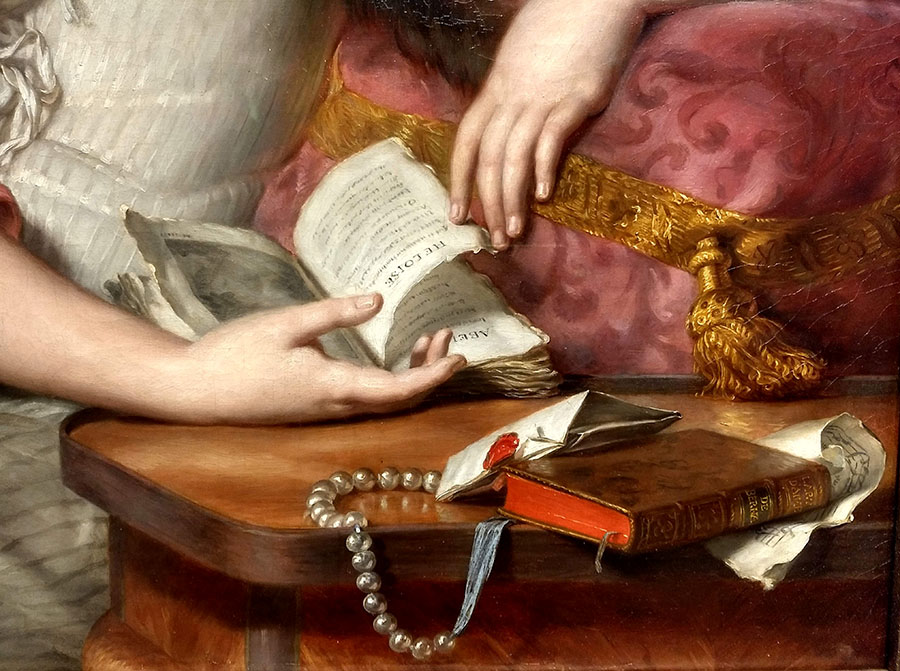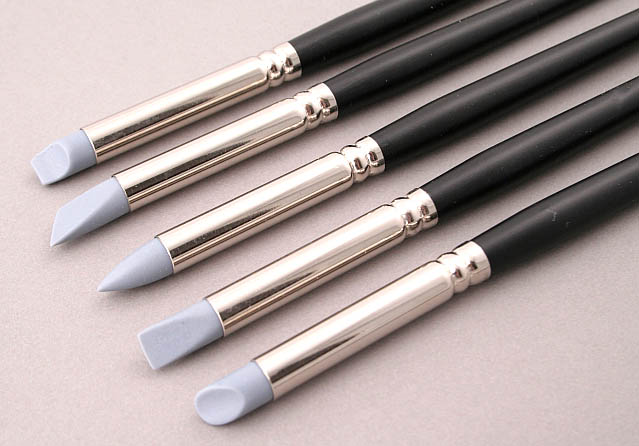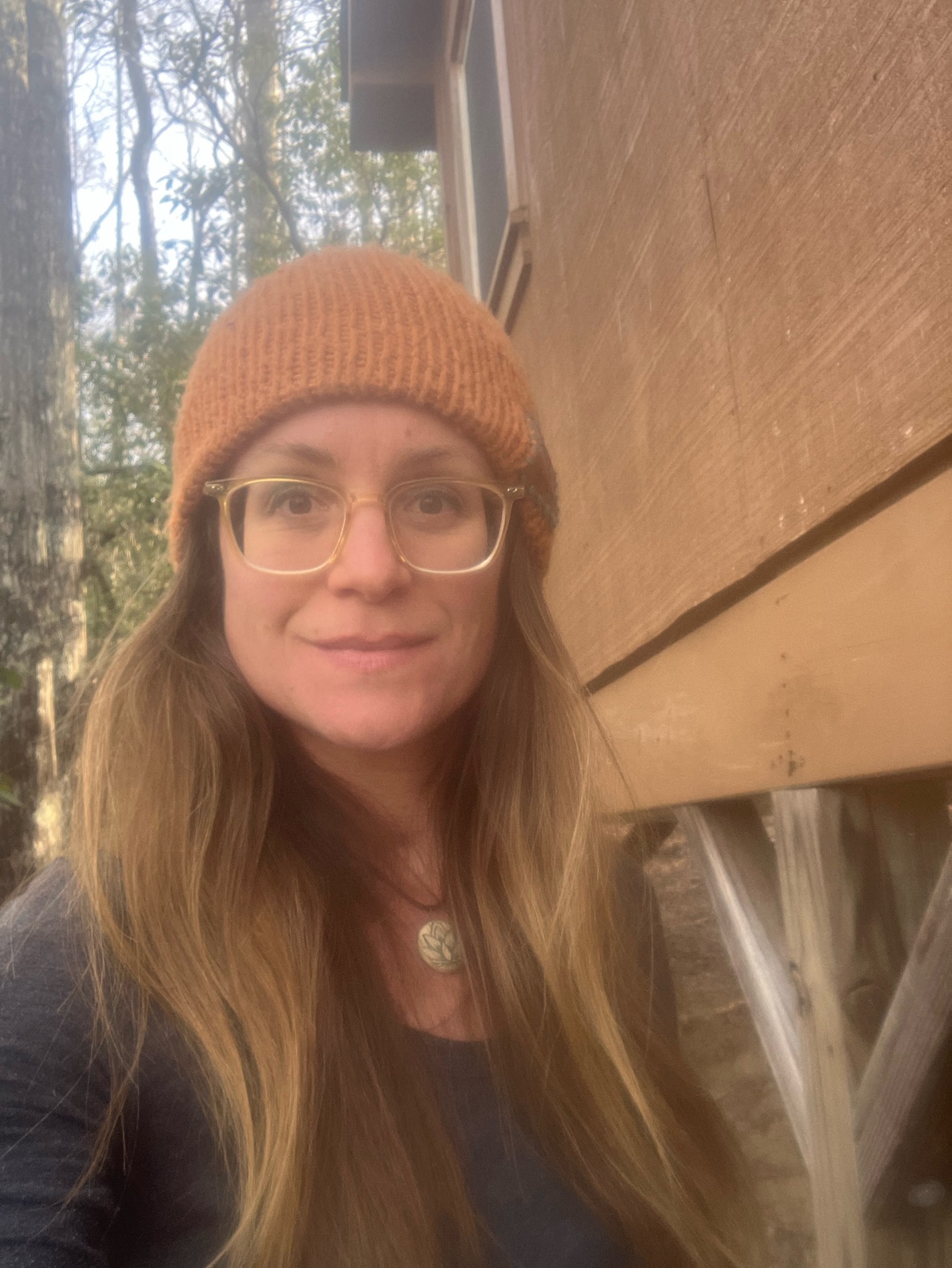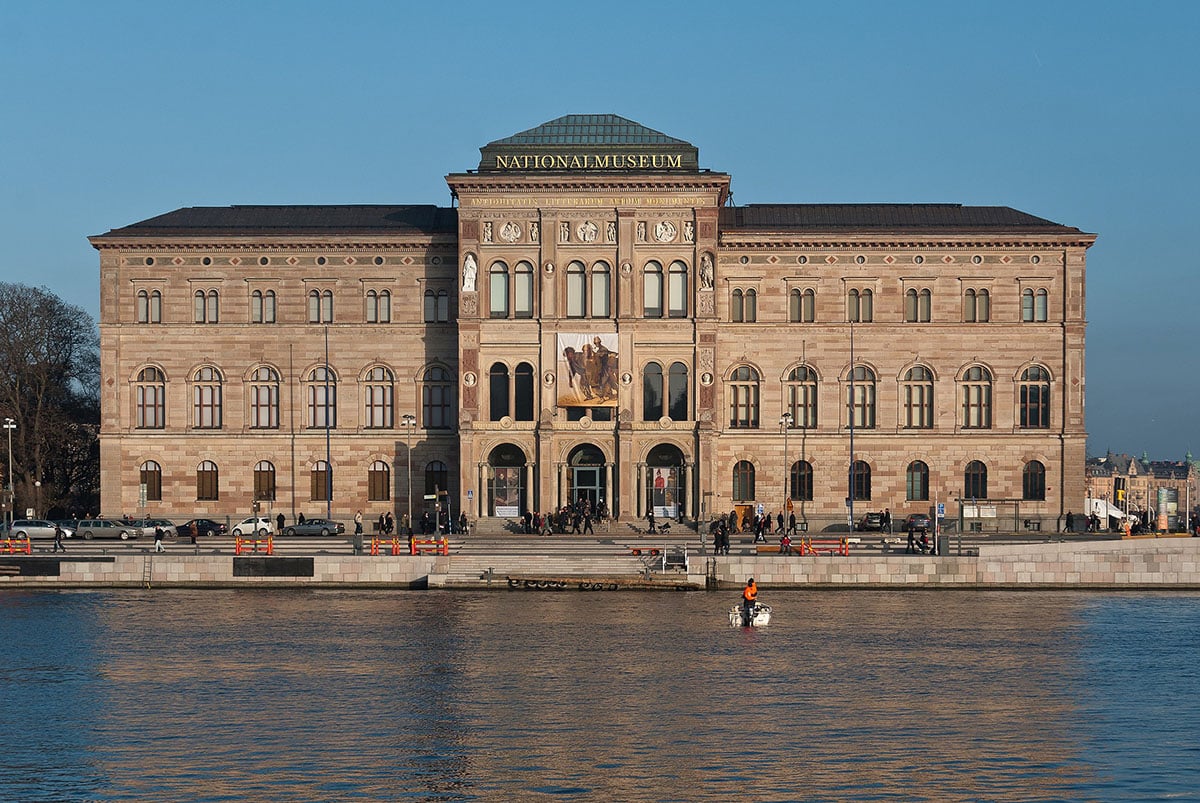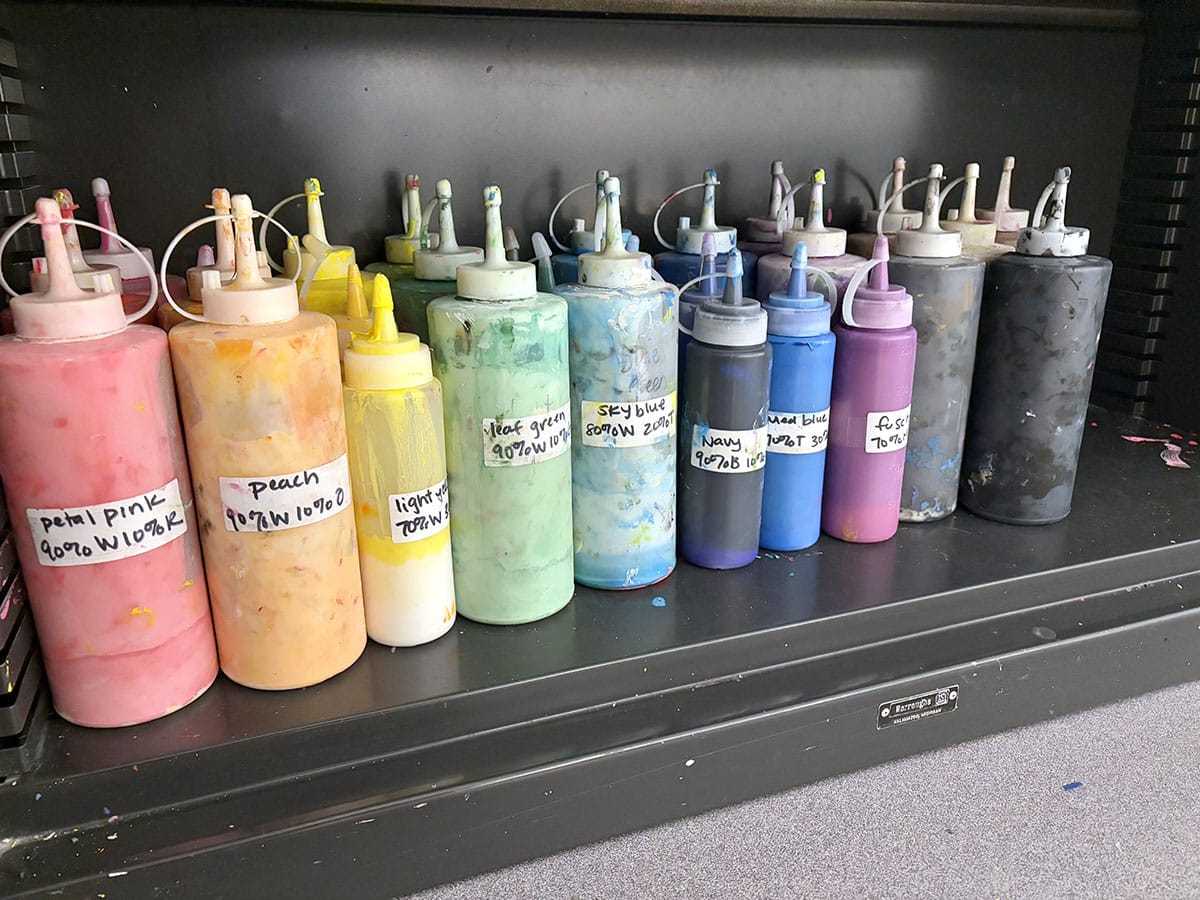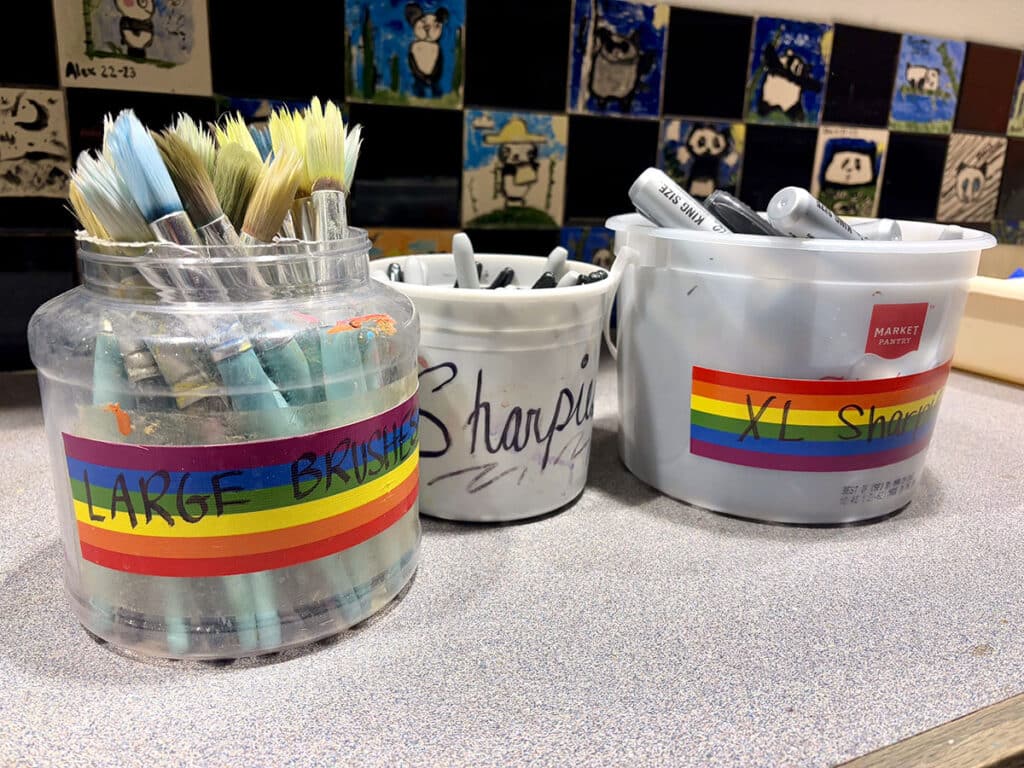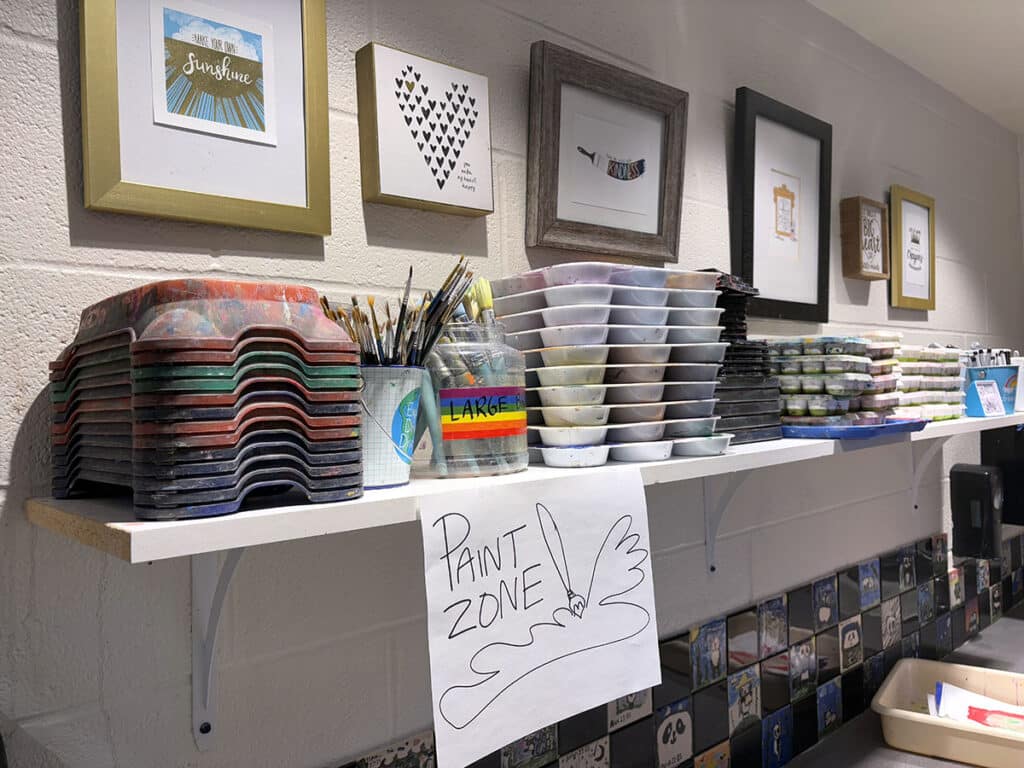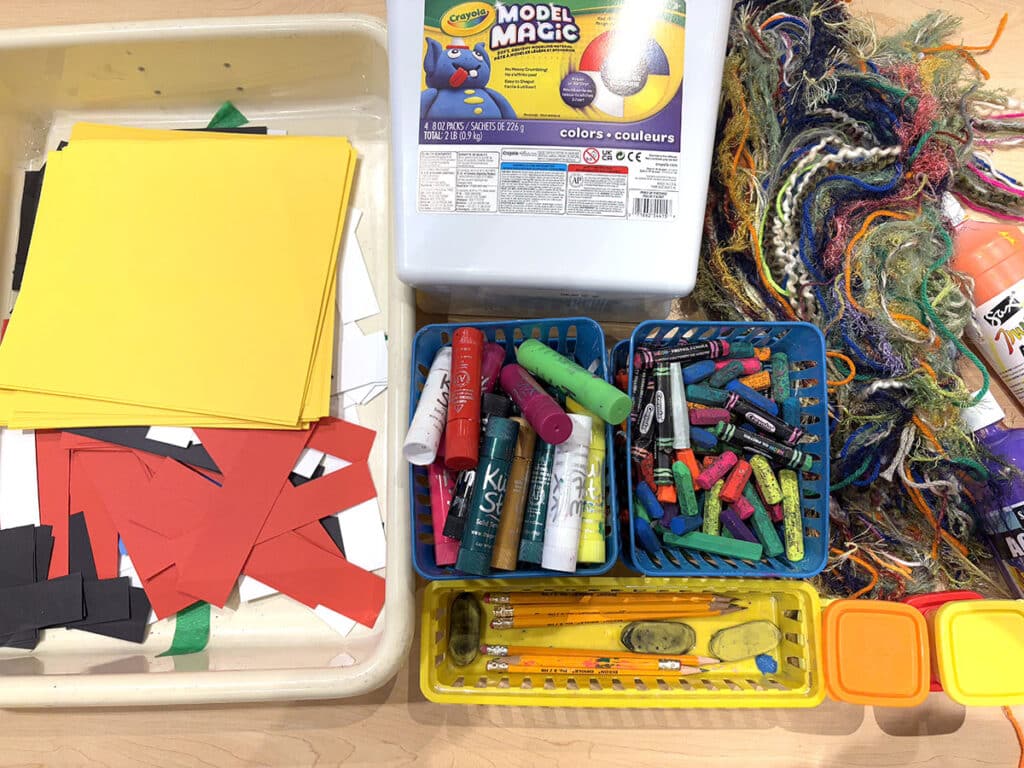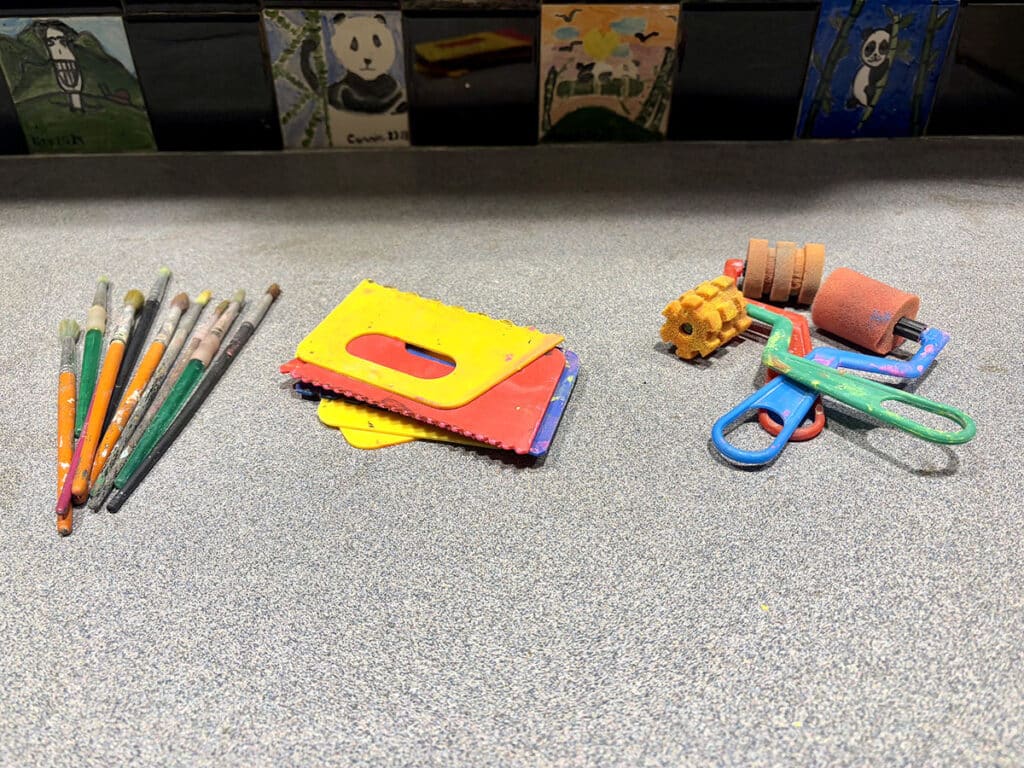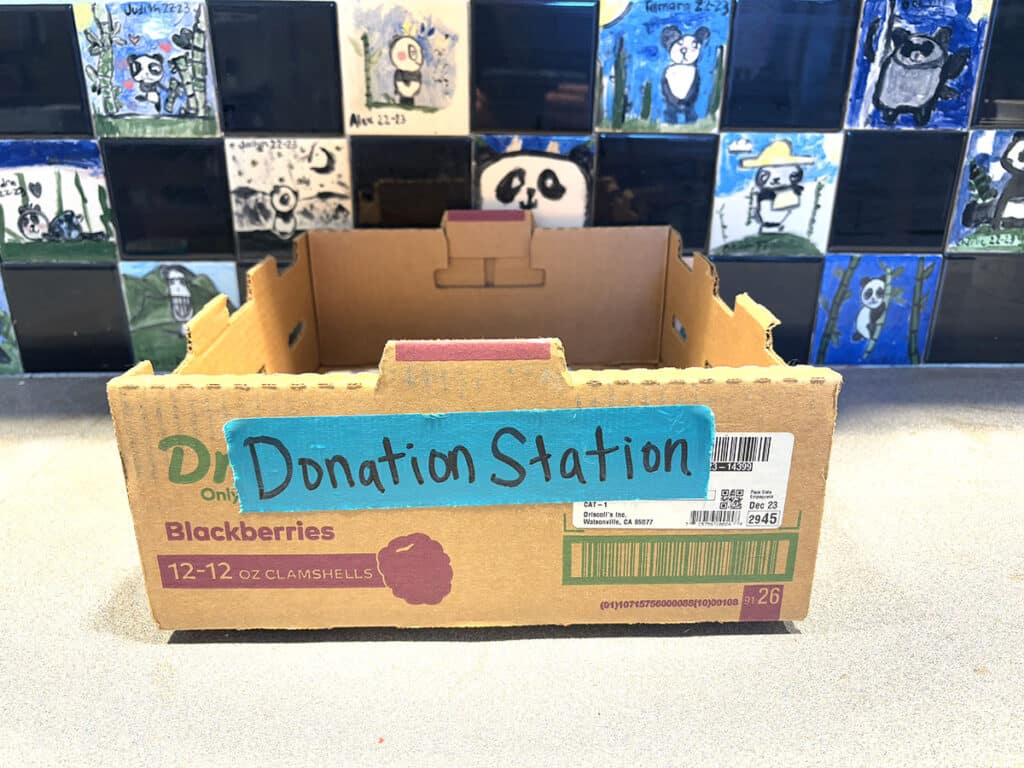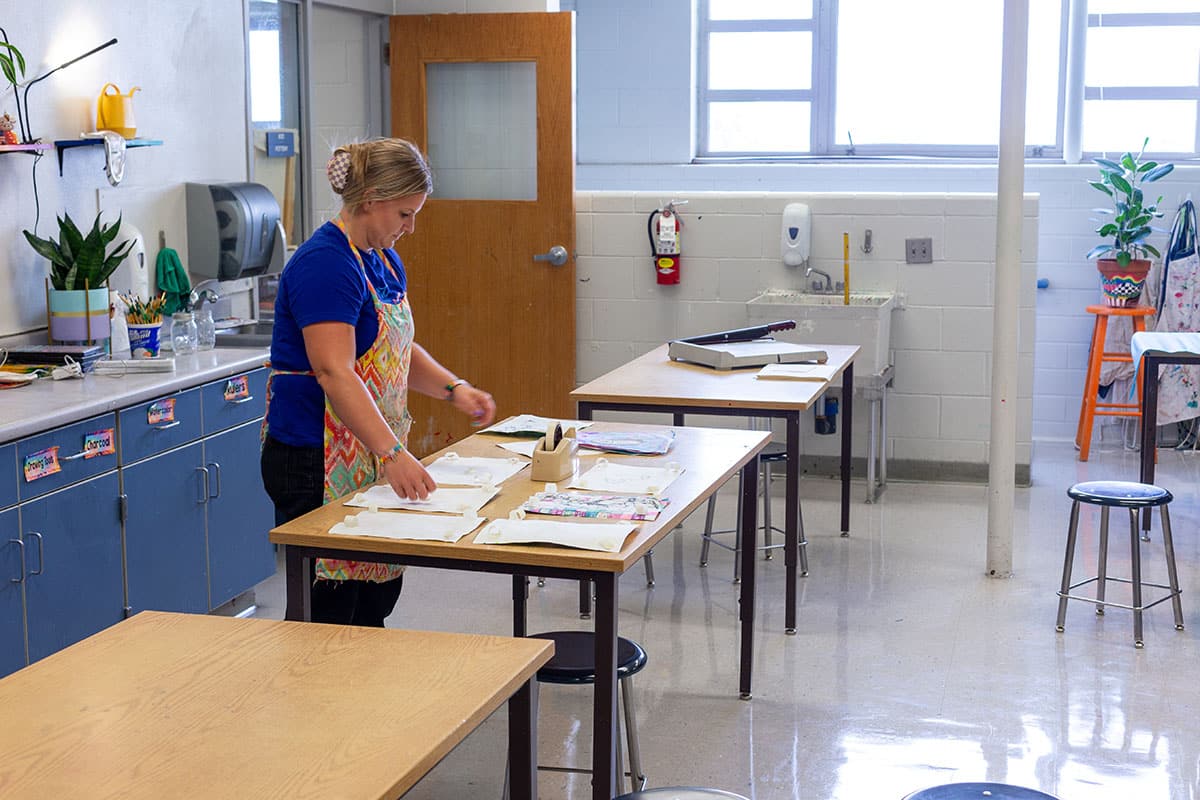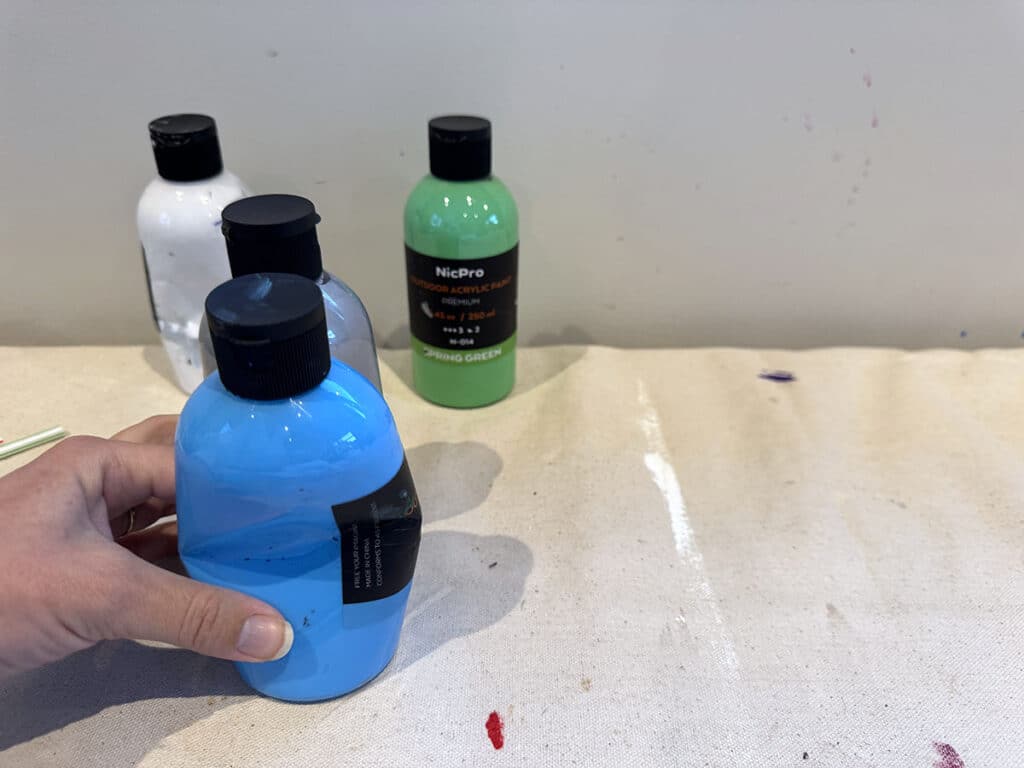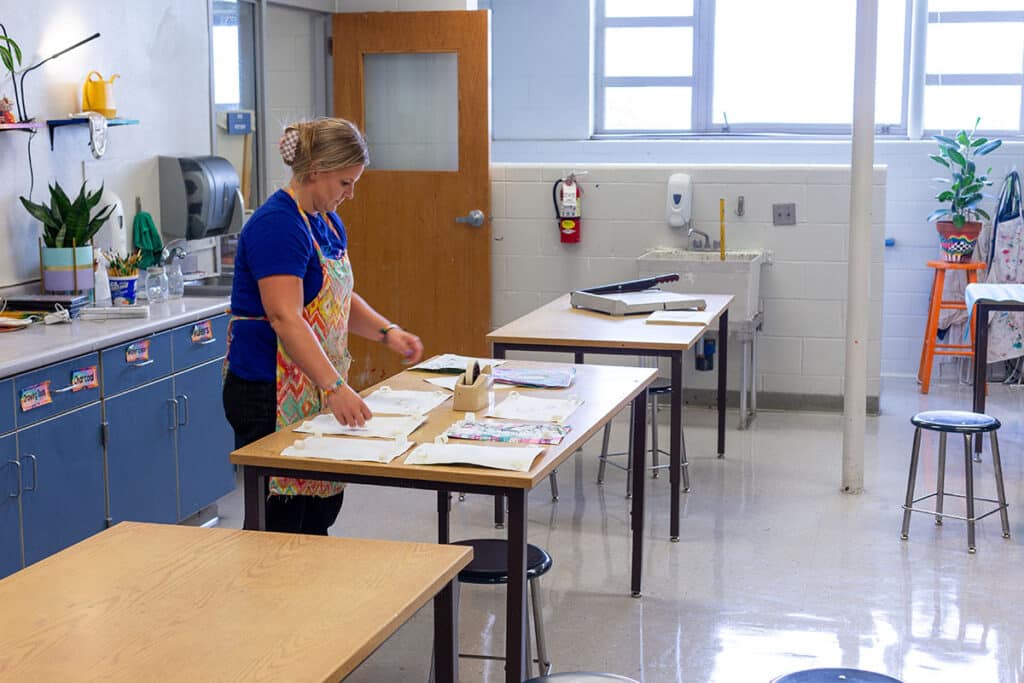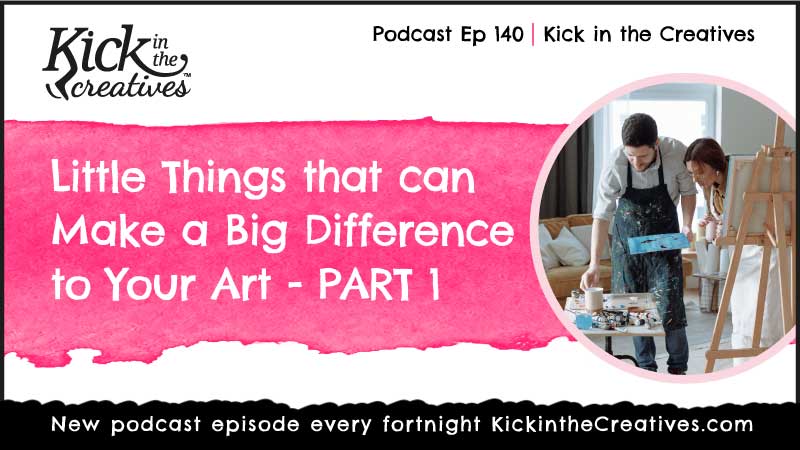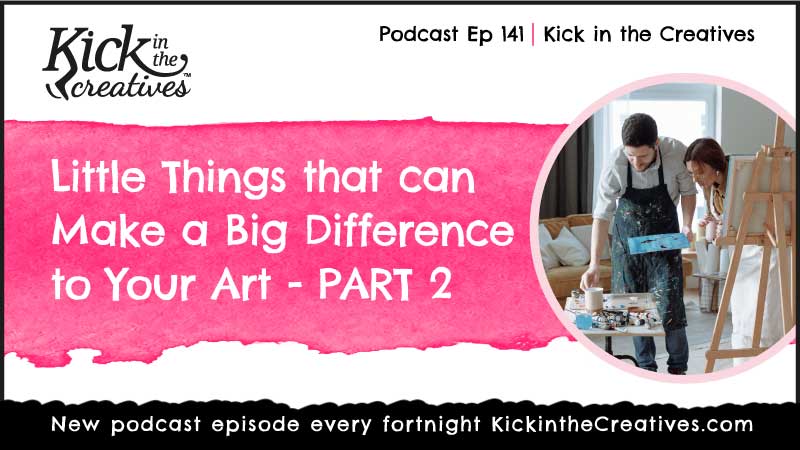Imagine this. We can feel confident and inspired by looking at bold brushstrokes of Sargent. Or, perhaps, we can find solace in Vermeer’s quiet portraits. Maybe, the gaze of Frida’s self-portraits can reflect our own inner strength. Visual art, in its myriad of forms and styles, is a keepsake of our emotions. Art is open to everyone, regardless of age, culture, country or education level thanks to art museums, books and the Internet.

The Science of Art & Emotion

When we go to an art museum to marvel at the technical skills of artists, research reveals a deeper magic at play. Studies have shown that engaging with visual art can trigger a cascade of positive effects on our emotional and mental well-being:
1.Reduced stress and anxiety: A 2019 study published in the Journal of the American Medical Association found that museum visits lowered cortisol levels, the stress hormone, in participants. Promoting relaxation, art can be a useful technique to lower your anxiety level without taking the prescription.
2. Enhanced mood and happiness: A 2015 study by the University of Westminster revealed that looking at art increased feelings of pleasure and excitement in participants.
3. Improved empathy and social connection: A 2020 study in PLOS One found that viewing art together fostered greater empathy and prosocial behavior among participants.

The Secret Weapon is Art Education
The impact of visual art isn’t just for art nerds; it’s an effective tool for nurturing well-being from a young age. Art education is often ignored in public schools giving more value to sciences or sports. However, we have many parts to us and we grow emotionally by incorporating many subjects and social cues into our life. Art isn’t about making pretty pictures; rather it’s about:
Building self-esteem and confidence: As children express themselves through art, they discover their unique creative voices, boosting their self-confidence and sense of accomplishment.
Enhancing cognitive skills: Studies show that art education improves critical thinking, problem-solving, and spatial reasoning skills, giving young minds a well-rounded workout.
Fostering emotional intelligence: Through art, children learn to identify and express their emotions, developing a healthy vocabulary for their inner world. I think this is the most overlooked, yet most powerful application of art in our daily experiences.

Creative thinking is not limited to arts. It often influences our business and social decisions.. Creativity is essential in problem solving, science exploration and personal life growth. Some super creative personalities like Steve Jobs and Elon Musk have revolutionized our understanding of and interaction with technology. Creative thinking is about generation of unique ideas and solutions. It’s a skill that takes time to develop while we study arts and sciences in school. Sometimes students do need help with homework and assignments. There are many companies that offer quality service helping students succeed in learning. At homework help websites experienced writers help students understand difficult course topics, reducing stress and overwhelm. Students are able to complete homework on time and hone their creative skills. They show improved performance in grades and timely submission of assignments.

Gustav Klimt despised government control and censorship in the arts, and as a result, revolutionized the art scene in Europe with his sensual, stylized art in early 20th century. He has influenced many modern and contemporary artists as well as art styles, including Art Nouveau, Bauhaus, and Russian Constructivists. According to the Met, The girl’s parents were banker-industrialist Otto Primavesi and his wife Eugenia, who were supporters of progressive Viennese art and design. This painting was seized by the Nazis from Jenny Pulitzer Steiner in 1938 in Vienna and restituted to her in 1951. http://www.metmuseum.org/art/collection/search/436819
Tips to Tap into Art’s Therapeutic Power in You
Every person has the artistic side inside him. It may be dormant or not fully explored. As we nurture this part of our personality, we discover new ways of looking at the world. We become more creative in our jobs. We feel emotional connection to people. We engage with others with empathy. We see beauty in ordinary places. We become more connected to the source of our divine nature.
So if you’re in the mood to discover and process your emotions via visual art, here are some tips to get you started.

1. Visit an art museum or art gallery:
When you travel to another state or city, place the largest art museum and a few art galleries on your list. Not everything is going to look as art to you or become your favorite, but you learn to explore art beyond your comfort zone; you also understand what you really like or dislike. Sometimes, I go out and get disappointed in the shown objects promoted as ‘art’, but there are moments when I find paintings or sculpture that inspire me to create art or try new art materials or just look at the subject differently. I often study paintings by looking at unusual composition, color use or texture created in paint. Such visits cultivate my taste and appreciation of art.

Digital art and technology: I find this new realm of technology exciting. I’m not talking about the NFT scams or bitcoin-get-rich schemes. I think that the interactive, digital art installations are becoming more creative and exciting in comparison to contemporary painting. Some interactive installations can help you explore yourself and grow your understanding of reality by going to these virtual reality rooms. I like how some artists combine nature and technology to create moving exhibitions. My favorite artists in this field are: Studio Drift, Studio Olafur Eliasson, Kusama’ Infinity Rooms. You can also explore new interactive spaces like Other World, a 32,000-square-foot immersive art installation in Columbus and Philadelphia. It’s an interactive, multilevel playground filled with large-scale art, mixed reality playgrounds, and secret passageways. It’s a surreal mix art, technology and interactive experience.

2. Let your inner artist shine:
Grab a brush or a pencil and make a drawing of something in front of you. Sketch a tree outdoors or a flower on your table. Write a note next to your sketch about your feelings as you’ve been drawing it. It’s about finding joy in the process of creation.

3. Turn your home into a gallery:

Surround yourself with art that speaks to your soul. Photographs, paintings, small sculptures or even handmade coffee cups can create a nurturing environment that reflects your inner world. Sometimes I visit homes that have 100% white walls. These houses look empty of color and emotion. Lacking personality, such houses are generic and sterile. Every human being is unique and by exploring your emotions in art, you create beautiful and healing space for yourself and others around you.

4. Engage with art in everyday life:
Notice the beauty in the architecture you pass, the patterns in nature, the colors of a sunset, the texture in your friend’s bag. Collect those moments in a sketchbook or pictures because the world is your scrapbook of memories and emotion.

5. Art therapy:
Art therapy is a profession and service that grew out of art-making. It’s about using visual arts as a tool for self-expression, emotional exploration, and healing. From trauma recovery to managing chronic illness, art therapy offers a powerful outlet for processing difficult emotions. If you think that drawing is not your thing, try making collage pieces out of magazines and postcards exploring your emotions. I find that I often make art and collages without any particular thoughts but the meaning reveals itself when the art is done… Just like writing or a combination of the two, such process can help you understand and process your painful past to move into the light.
Sometimes psychologists use projective tests to understand your psyche.
Deep Dive into Projective Tests:
Projective tests, like inkblots and incomplete drawings, offer a glimpse into unconscious thoughts, feelings, and conflicts. They often look like symmetrical blobs of paint juxtaposing negative and positive space. But how does it work, right?
The Projective Hypothesis: Imagine throwing a pebble into a still pond. Ripples emanate outwards, revealing the contours of the pond floor. Similarly, projective tests are thought to “disrupt” the calm surface of the mind, provoking responses that reflect our inner landscape. By presenting ambiguous stimuli, such as inkblots or unfinished sentences, psychologists encourage individuals to project their own interpretations and motivations, revealing facets of personality that might otherwise remain hidden.

Common Projective Tests:
- Rorschach Inkblot Test: The Rorschach presents ten inkblots of varying shapes and complexity. Psychologists analyze the patient’s interpretations, focusing on content, location, and movement. A bat in the blot might indicate anxiety, while seeing multiple figures interacting could suggest interpersonal struggles.
- Thematic Apperception Test (TAT): In this test, individuals tell stories about ambiguous pictures depicting people in various situations. The psychologist delves into the themes, emotions, and conflicts projected onto the characters, gaining insights into the patient’s underlying motives and needs.
- Draw-a-Person Test: Simple as it sounds, this test can reveal volumes about self-perception and emotional states. The size, posture, and details of the drawing can offer clues about self-esteem, anxieties, and interpersonal relationships.
You can read about these tests here: https://pdx.pressbooks.pub/thebalanceofpersonality/chapter/chapter-3/
Evaluation and Interpretation: Projective tests are not designed to provide definitive diagnoses, but rather to offer additional information alongside other clinical tools. Psychologists consider contextual factors, compare responses to established norms, and analyze the specific details and patterns in the patient’s interpretations. Projective tests can reveal deeper dynamics:
- Defense mechanisms: The way individuals cope with stress and anxiety can be evident in their interpretations, revealing defense mechanisms like denial, projection, or rationalization.
- Unconscious conflicts: Underlying anxieties, fears, and desires can surface through projected themes and symbolism, helping psychologists get to the root of emotional struggles.
- Relationship dynamics: Projective tests can shed light on how individuals perceive and interact with others, offering insights into potential relationship difficulties or attachment styles.
However, it’s crucial to remember that projective tests are not infallible and rely heavily on subjective interpretation with some cultural biases and individual quirks that can influence responses. While not perfect, they can be valuable tools for psychologists to gain a deeper understanding of their patients, their personalities, and the emotional forces that shape their lives.
6. Community art projects:

It’s often difficult to make yourself do something outside the house if you’re introverted or feel tired after a work week. However by going out and participating in collaborative art projects, you gain a sense of belonging, connection, and collective creativity that improves your mood and well-being. Imagine painting a mural for your community or taking an art class to learn the basics of pottery or sculpture. This activity can make you feel needed and appreciated by other members of the circle.

In conclusion:
Art is a valuable tool helping people express their emotions in a safe environment. Children benefit from doing art greatly by learning to explore their feelings and their relationship to the world around them. Art nurtures creativity, intrapersonal skills and grows emotional intelligence that becomes useful in a wide range of daily tasks. Art reduces stress and anxiety.
Remember, the emotional impact of art is unique to you. So, the more you explore, experiment, and record, the more your soul expands with empathy, love and curiosity. Art provides emotional connection to ourselves and the world while other activities may not have the same reach. Create healing space in your mind, home, relationships by developing your skills in painting, drawing, sketching, photography, pottery, etc. The world awaits your light.


